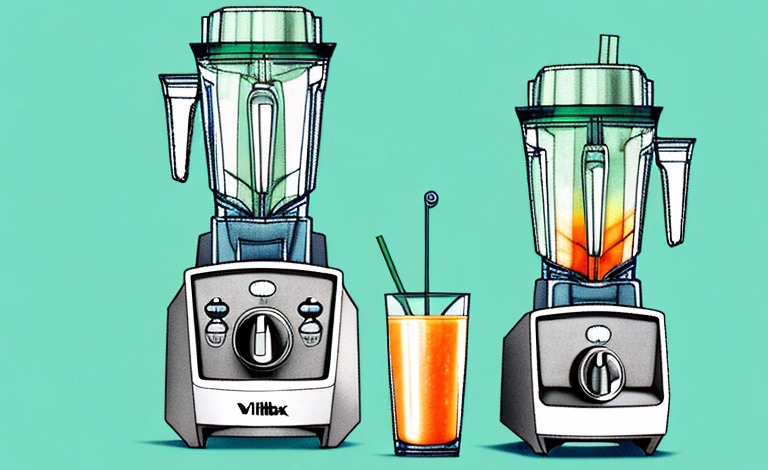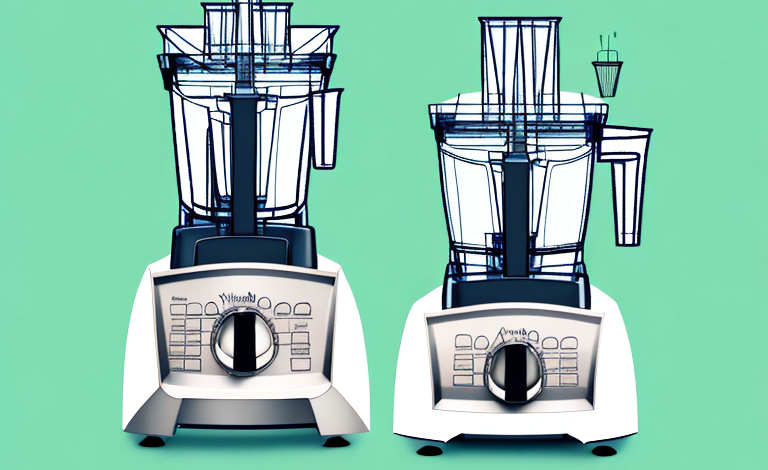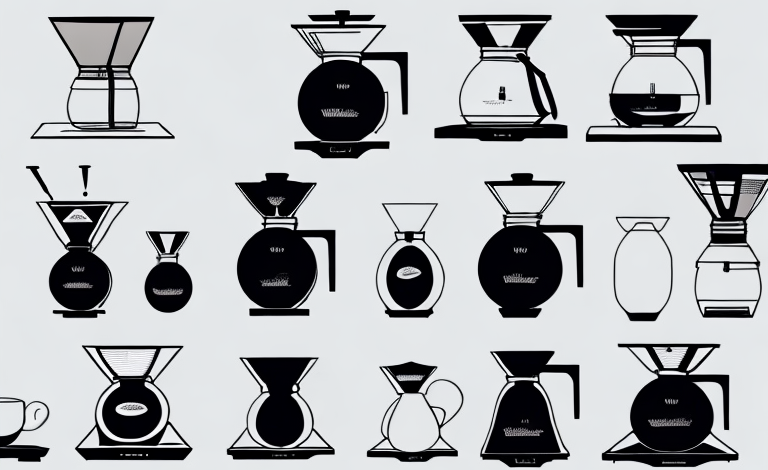The debate between juicing and blending has been ongoing for many years. While juicing has been touted as the best way of getting all the nutrients and vitamins from fruits and vegetables, many people have started to use blenders, particularly Vitamix blenders, as a way of making delicious and nutritious drinks. But can a Vitamix be used as a juicer?
Understanding the difference between a Vitamix and a juicer
The first thing to understand is that a juicer and a blender, such as the Vitamix, are two very different appliances. A juicer is designed to extract the juice from fruits and vegetables, leaving behind the pulp. A blender, on the other hand, is designed to blend everything together, including the pulp, into a smoothie or shake. The key difference between the two is that juicing removes the fiber content from the fruits and vegetables, while blending preserves it.
Another important difference to consider is the type of produce you plan to use. Juicers are best for extracting juice from hard fruits and vegetables, such as carrots and apples, while blenders are better suited for softer fruits and leafy greens. Additionally, juicers tend to produce a higher yield of juice, while blenders can create a thicker, more filling drink.
What is a juicer and how does it work?
There are two main types of juicers: centrifugal and masticating. Centrifugal juicers use a high-speed spinning blade to extract juice from the fruits and vegetables, while masticating juicers use a slower, grinding method. Juicers are great at extracting large amounts of juice from smaller amounts of fruits and vegetables quickly.
It is important to note that while juicing can be a convenient way to consume more fruits and vegetables, it does remove the fiber from the produce. This means that the juice may not keep you feeling full for as long as eating the whole fruit or vegetable would. Additionally, some juicers may not be able to extract all of the nutrients from the produce, so it is important to choose a high-quality juicer and to vary the types of fruits and vegetables you juice to ensure a well-rounded nutrient intake.
What is a Vitamix and how does it work?
The Vitamix is a high-speed blender that uses powerful blending blades to blend everything together into a smooth drink. Unlike a juicer, the Vitamix blends everything, including the fiber content.
Additionally, the Vitamix can also be used to make hot soups, nut butters, and even ice cream. Its powerful motor and blades can heat up ingredients through friction, allowing for quick and easy soup-making. Nut butters can be made by blending nuts and oils together until they reach a smooth consistency, while ice cream can be made by blending frozen fruit and milk or cream. The versatility of the Vitamix makes it a popular choice for those looking to create a variety of healthy and delicious recipes.
Pros and cons of using a Vitamix as a juicer
While the Vitamix can be used as a juicer, it does not extract juice in the same way that a dedicated juicer does. Because the Vitamix blends everything together, including the pulp, the resulting drink is thicker and not as smooth as what you would get from a juicer. However, using a Vitamix as a juicer is also beneficial because it preserves the fiber content, which is important for gut health.
Another advantage of using a Vitamix as a juicer is that it allows you to use the entire fruit or vegetable, including the skin and seeds, which are often discarded when using a traditional juicer. This means that you are getting more nutrients and antioxidants from your juice. Additionally, Vitamixes are versatile and can be used for a variety of other tasks, such as making smoothies, soups, and nut butters, making it a great investment for those who want a multi-purpose kitchen appliance.
Can you make juice in a Vitamix?
Yes, you can make juice in a Vitamix. It just requires a little more preparation and clean-up than using a juicer.
When making juice in a Vitamix, it is important to note that the resulting juice will be thicker and more pulpy than juice made in a juicer. This is because the Vitamix blends the entire fruit or vegetable, including the fiber-rich pulp. However, this can be beneficial as it provides more nutrients and fiber in the juice. To make juice in a Vitamix, simply blend your desired fruits and vegetables with a little bit of water, and then strain the mixture through a fine mesh sieve or nut milk bag to remove any remaining pulp.
How to make juice in a Vitamix
To make juice in a Vitamix, start by selecting your fruits and vegetables. Cut them into small pieces, removing any seeds or skins as needed. Add them to the blender, along with a little water to help with blending. Blend everything together until smooth. Then, using a nut milk bag or cheesecloth, strain the mixture to remove any excess pulp. The resulting juice can be consumed immediately, or stored in the fridge for up to 24 hours.
It’s important to note that while juicing in a Vitamix can be a quick and easy way to get your daily dose of fruits and vegetables, it does remove the fiber from the produce. This means that the resulting juice may not keep you feeling as full as eating the whole fruits and vegetables would. It’s always a good idea to balance your juice intake with whole foods to ensure you’re getting all the nutrients and fiber your body needs.
Comparison of juicing and blending in a Vitamix
While using a Vitamix to blend everything together preserves the fiber content, it also breaks down the nutrients and enzymes in the fruits and vegetables more than a juicer would. Juicing, on the other hand, extracts the nutrients and enzymes from the fruits and vegetables in a more concentrated form, without the fiber.
Another advantage of juicing is that it allows you to consume a larger quantity of fruits and vegetables in one sitting, as the fiber is removed and the juice is more concentrated. This can be especially beneficial for individuals who struggle to eat enough fruits and vegetables in their diet.
However, blending in a Vitamix can be more versatile as it allows you to add other ingredients such as nuts, seeds, and protein powders to create a more filling and complete meal. Additionally, the fiber content in blended drinks can help regulate blood sugar levels and keep you feeling full for longer periods of time.
Nutritional value of blended vs. juiced fruits and vegetables
While both juicing and blending have their benefits, they also have their own nutritional differences. Juicing is a great way to get a concentrated dose of vitamins and minerals, particularly when you juice greens like kale and spinach. Blending, on the other hand, preserves the fiber content, which is important for gut health and can help with digestion. In the end, it really comes down to personal preference and what your body needs.
It’s important to note that juicing can also lead to a higher intake of sugar, as the process removes the fiber that helps slow down the absorption of sugar into the bloodstream. This can be a concern for those with diabetes or other blood sugar issues. On the other hand, blending can sometimes result in a thicker, more filling drink that can help with satiety and weight management. Ultimately, it’s important to consider your individual health goals and needs when deciding between juicing and blending.
Tips for using your Vitamix as a juicer
If you decide to use your Vitamix as a juicer, here are some tips to keep in mind:
- Select fruits and vegetables that are high in water content, such as cucumbers and watermelon. This will help with blending and straining.
- Use a nut milk bag or cheesecloth to strain out any excess pulp.
- Start with small amounts of fruits and vegetables, and gradually increase depending on your taste preferences.
Another tip for using your Vitamix as a juicer is to add some ice cubes to the blender. This will help to keep the temperature low and prevent the fruits and vegetables from oxidizing too quickly.
It’s also important to clean your Vitamix thoroughly after each use. Make sure to remove any leftover pulp or seeds from the blades and wash the container and lid with warm, soapy water.
Best fruits and vegetables for blending vs juicing in a Vitamix
Some of the best fruits and vegetables for blending in a Vitamix include bananas, berries, avocado, spinach, kale, and cucumbers. For juicing, some great options include carrots, celery, apples, beets, and ginger.
When blending in a Vitamix, it’s important to remember to add enough liquid to ensure a smooth consistency. Some great options for liquid include water, coconut water, almond milk, or yogurt. Additionally, adding a scoop of protein powder or a handful of nuts can help make your smoothie more filling and nutritious.
When juicing in a Vitamix, it’s important to note that the resulting juice will be thicker and more pulpy than juice from a traditional juicer. To make the juice smoother, you can strain it through a fine mesh sieve or cheesecloth. It’s also important to drink the juice immediately after making it, as it will start to lose nutrients and flavor quickly.
How to clean your Vitamix after juicing or blending
After juicing or blending in your Vitamix, it’s important to clean it thoroughly to avoid any leftover residue. Start by rinsing the blender jar with warm water, then add a few drops of dish soap and water to the jar. Blend everything together for 30 seconds, then rinse again with warm water.
Juicing vs Blending: Which is better for you?
Ultimately, the decision between juicing and blending comes down to personal preference and what your body needs. If you’re looking for a concentrated dose of vitamins and minerals, juicing may be the way to go. If you’re more concerned with preserving the fiber content and aiding digestion, blending in a Vitamix can be a great option.
Alternative ways to use your Vitamix besides blending or juicing
The Vitamix is a versatile appliance that can be used for much more than just blending or juicing. Here are some other ways to use it:
- Make nut butter
- Create homemade soup
- Grind coffee or spices
- Make your own flour from grains like quinoa or oats
- Create frozen desserts like ice cream or sorbet
Conclusion: Should you use your Vitamix as a juicer?
While a Vitamix can be used as a juicer, it’s important to understand that it won’t extract juice in the same way that a dedicated juicer does. If you’re looking for a thinner, more concentrated juice, a juicer may be a better option. However, if you’re concerned about preserving the fiber content and aiding with digestion, using a Vitamix as a juicer can still be a great choice. In the end, it really comes down to personal preference and what your body needs.



